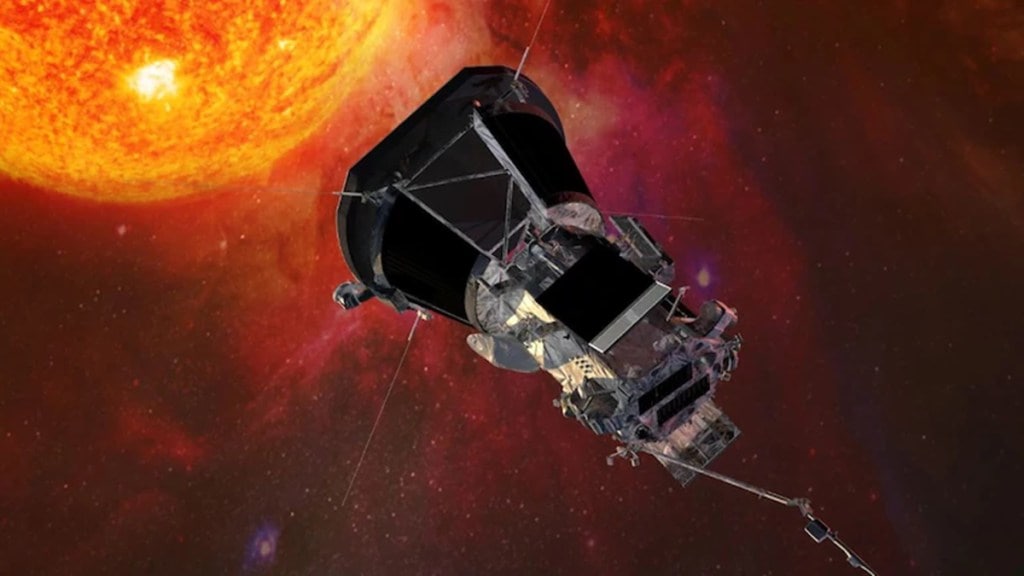NASA’s Parker Solar Probe is set to achieve a historic milestone on December 24, 2024, by becoming the closest human-made object to fly by the Sun. During this 22nd close approach, the spacecraft will pass just 3.8 million miles (6.1 million kilometers) from the Sun’s surface, breaking the record for the closest ever flyby of the Sun.
Unprecedented proximity to the Sun
Launched in 2018, the Parker Solar Probe is on a mission to study the Sun more closely than any other spacecraft ever before. Using a series of gravity assists from Venus, the probe has slowly modified its orbit, which enabled it to get closer and closer to the Sun each time. The closest flyby of its seven-year mission, the spacecraft will pass close to the Sun on December 24. Scientists have a great opportunity to gather data from the outer atmosphere of the Sun, called the corona.
Traveling at an incredible 430,000 miles per hour (692,000 kilometers per hour), Parker Solar Probe holds the record for being the fastest human-made object built. Multiple Venus flybys at high velocities help it reach close to the Sun safely in a bound orbit.
Exploring the Sun’s heat discrepancy
One of the most interesting scientific questions that the Parker Solar Probe looks to answer is why the Sun’s corona is much hotter than its surface. While the Sun’s surface is about 10,000°F (5,500°C), the corona can be a million times hotter, reaching 1-2 million°F (500,000-1,000,000°C). An understanding of the temperature difference is critical in order for scientists to interpret solar phenomena such as solar flares and coronal mass ejections, both of which affect space weather and potentially impact Earth’s satellites, communications, and power grids.
The Parker Solar Probe will fly through the corona, collecting information on magnetic fields, charged particles, and energy inside this extreme environment, shedding light on the mechanisms that heat up the Sun’s atmosphere and drive solar wind.
Heat shield technology to withstand extreme heat
The extreme conditions of the Sun’s proximity present a significant challenge to the Parker Solar Probe. At its closest approach, the spacecraft will encounter temperatures of around 1,800°F (980°C). To survive this intense heat, the probe is equipped with a sophisticated 4.5-inch (11 cm) thick carbon-composite heat shield that can withstand temperatures up to 2,500°F (1,377°C). The heat shield is positioned between the Sun and the spacecraft, ensuring that the instruments inside remain at a stable temperature of around 80°F (27°C).
Mission updates and data collection
The flyby on December 24 will not be live streamed, but NASA will keep updating the mission’s status. Controllers are expecting to receive health status data from the spacecraft by December 27, while it will start sending back the first batch of scientific data that include images of the Sun’s corona sometime in January 2025.
A long-term mission with many more flybys
The December 24 flyby is not Parker Solar Probe’s final close approach to mission completion. The spacecraft will fly more within the next several years. The closest upcoming ones will be in March and June 2025, after which the probe continues acquiring necessary data that change humanity’s understanding of the Sun and space weather in different ways.
By studying the Sun from such close proximity, the Parker Solar Probe is poised to answer long-standing questions and provide essential data for protecting Earth’s technology from the impacts of solar activity. This is a mission that will shed light on one of the most powerful forces in our solar system: the Sun.


